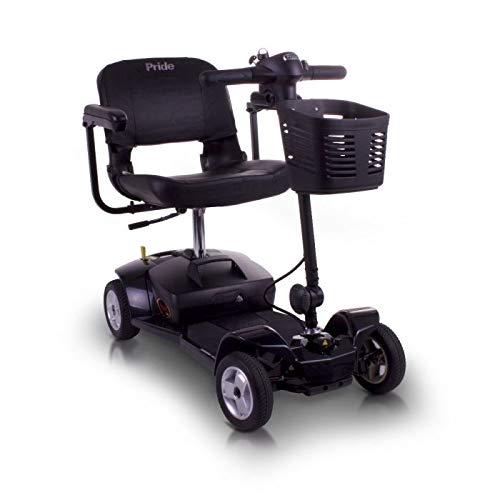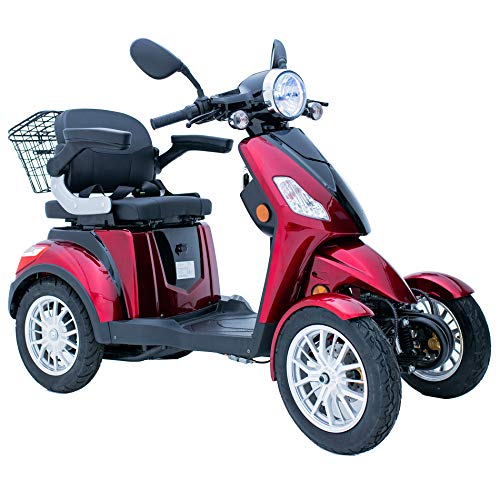How To Create Successful Urban Mobility Solutions Guides With Home
페이지 정보

본문
 Urban Mobility Solutions
Urban Mobility SolutionsCities face significant challenges in addressing congestion, air pollution, accessibility and sustainability. Urban mobility solutions that make use of technology advancements could enhance the quality of life, promote economic growth, and reduce the impact on the environment.
However, the implementation of these solutions requires collaboration across the entire mobility ecosystem. A citizen-centric and city-oriented approach is crucial. Collaboration with cities, cross-industry stakeholders and Mercedes-Benz experts allows for an individual solution that is tailored to meet the specific needs of each city.
Congestion
The challenges of congestion have been a key focus of urban four wheels electric mobility scooter planning. Time spent in traffic decreases individuals' productivity and lowers the efficiency of cities as a whole. This means that cities must balance innovation in transportation with the need to address the effects of growing populations and the deterioration of infrastructure.
Urban transportation systems must be safe and accessible, while reducing noise, pollution and waste. Furthermore, cities must tackle the challenges of traffic congestion, parking management and decarbonization.
There are a variety of ways to tackle traffic congestion, but in order to be successful everyone must take the responsibility for the problem. It starts with acknowledging that congestion isn't only an inconvenience for commuters and their families, but also a significant economic cost for businesses and the overall economy. It is therefore important to use accurate and high-resolution data to record the day-to-day variations of travel times in order to pinpoint the root causes of congestion and the most efficient solutions.
It is crucial to inform the public as well as business owners of the effect that congestion has on their business. Consistent and clear messages can increase awareness, inform the public on solutions, and motivate business leaders to promote strategies for reducing congestion.
One solution is to increase the capacity of roads. This is costly and subject to numerous limitations, including environmental and land-use laws. Other alternatives include promoting alternative methods of transport, such as taxi hailing and bikeshare apps or even making carpooling and congestion pricing a reality. Parking systems can be inefficient and contribute to congestion. Smart parking solutions can optimize space usage and divert trips from busy roads.
Aging Infrastructure
In the United States cities and towns have to contend with traffic congestion and security issues caused by the age of infrastructure. As traffic volumes continue to increase bridges and roads are putting residents and businesses at risk and increasing the time it takes to travel.
The outdated transportation infrastructure is a challenge that cannot be solved by technology alone. The Oregon Department of Transportation is working to address the issue by investing in new highways and other transportation projects that will ease traffic congestion, improve safety and modernize the system. These investments will ensure that the Portland region will continue to improve for the next generation.
With the pace of urbanization increasing the world is facing the challenge of finding affordable housing and the need for sustainable mobility solutions rises. Innovative solutions like e-scooters, e-buses, and bike sharing are being developed to combat climate change and lower carbon emissions. These new mobility solutions make it easier for people who have disabilities, a growing concern among many citizens.
This study uses a systematic literature survey (SLR) in order to examine 62 scientific papers and forecast the future development of different scenarios to 2030. The gradual growth of automated and shared mobility is predicted to be the primary factor the driving of changes. The scenario 'Mine is Yours' dominates (35% of the visions) followed by 'Grumpy old transportation' (18%) and "Tech-eager mobility" (17 percent). Progressive legislation and supportive policies are necessary for making these revolutionary mobility options widely accepted.
Inequality
Urban mobility solutions need to not only improve the flow of traffic and reduce emissions however, they must also be socially sustainable and economically viable for all. Transportation is often among the top household expenses, and these costs can disproportionately affect people with low incomes. The high cost of car payments and insurance, fuel and maintenance expenses can put a significant financial burden for families, and hinder them from accessing jobs, education, and services. Additionally, long commutes can have a negative effect on health and wellbeing of the residents.
Although public transportation can be a cost-effective alternative to private cars, many cities lack adequate infrastructure. The public transportation system is outdated and was created to serve a smaller population. It needs substantial investment to modernize. Lack of funds, as well as legacy technology can also hinder the development of new services.
In addition, congestion increases the amount of pollutants in the air and can pose a threat to the health of the public. Poor air quality can cause respiratory conditions and reduce quality of living. By enhancing and expanding the existing infrastructure congestion can be prevented through effective urban mobility planning.
The increased capacity of public transport will reduce travel time and make it more accessible to everyone especially those who are disabled or elderly. Moreover, it will help reduce the burden on households who have expensive cars and free up valuable parking spaces that can be put to use for more productive purposes.
In the future, increasing the use of alternative transportation modes can have a significant impact on inequality. As density increases within cities, Black-White and AAPI-White commuting inequality decreases, while women's commute time decreases in comparison to men's. This suggests that growing densities force AAPIs to trade similar wages for longer commutes, which then force Blacks to work further and women to be less likely to find jobs that are compatible with their qualifications and capabilities.
Air Quality
According to research, there is a direct link between exposure to pollutants that cause harm to health. Heavy traffic congestion and the use of diesel and gasoline vehicles generate large amounts of particulate matter (PM2.5 PM10, PM2.5) and gases such as nitrogen oxides (NO) and sulfur dioxide (SO2), volatile organic compounds and carbon monoxide, which are an illness risk and contribute to climate change.
The exposure to these pollutants can lead to heart attacks asthma, lung irritation, heart attacks, delayed development in children, and impaired cognitive functions. In addition, they can contribute to ozone pollution and greenhouse gas formation, as well as the urban heat island effect which causes higher temperatures in cities.
The development of public transportation is an effective measure to improve air quality and promote active compact electric mobility scooter. can reduce the emissions of transport including greenhouse gases. Furthermore by reducing emissions from urban transportation can help in achieving local, national and international climate change targets.
Smart mobility solutions can be used to encourage commuters to switch to electric mobility scooter cheap vehicles and vehicles that emit less emissions. In addition they can provide information on safe walking and biking routes. They can also promote ridesharing services that help to reduce the number of vehicles on the road as well as the associated pollution.
In a recent study in which we conducted a simulation of SUMPs' (Sustainable Urban Mobility Plans) impact on 642 cities in Europe. Our findings demonstrate that SUMPs have a significant impact on modelled "urban background concentrations" of PM2.5 and NO2, with average reductions of these substances ranging from 7% to around 7 percent. However it is important to note that these results only consider the emissions from transport as well as the concentrations in urban areas. In this study, SUMPs are not evaluated for other benefits such as lower energy consumption and reduced street levels of concentrations. Future studies should take into account these and other benefits.
Logistics
Urban mobility solutions must be based on an ecosystem approach that includes multiple players. They must take into account equity, technology and sustainability, while being tailored to the unique context of each city. While new technologies can be beneficial urban mobility systems, they must also integrate existing infrastructure, encourage public transport and bike share programs, and improve safety.
The logistics process involves the movement of goods and people within a city. It is the foundation for urban electric 4 wheel mobility scooter. It is essential for reducing congestion, maximizing time spent on commuting to work and enhancing accessibility to travel. The advancement of technology such as autonomous vehicles (AVs) will have an immediate impact on the city's logistics. It will also make the transportation sector more efficient. It will reduce the need for human driving, reduce fatal accidents caused by driver error, and increase the flow of traffic.
Logistics is complicated because of the many stakeholders involved. Each has their own goals budgets, priorities, and technologies. It is difficult to ensure that there is a consistent approach to the implementation of a particular project. It is also challenging to scale fold Up Electric mobility scooter and transfer solutions from one city into another since each has their particular needs.
 To tackle these issues, cities need to encourage technological innovation and create smart, agile logistical processes that can adapt to keep pace with technological advancements. This can be accomplished by promoting green logistics by integrating environmentally friendly urban planning into SUMPs or SULPs, or exploring the feasibility of air travel via drones. In addition it is crucial to foster collaboration between public transport agencies, private companies and logistics service providers, as well as to balance the use of digital technologies with local privacy regulations. This will allow for better transport and make the city more fluid, ultimately boosting citizens' living standards.
To tackle these issues, cities need to encourage technological innovation and create smart, agile logistical processes that can adapt to keep pace with technological advancements. This can be accomplished by promoting green logistics by integrating environmentally friendly urban planning into SUMPs or SULPs, or exploring the feasibility of air travel via drones. In addition it is crucial to foster collaboration between public transport agencies, private companies and logistics service providers, as well as to balance the use of digital technologies with local privacy regulations. This will allow for better transport and make the city more fluid, ultimately boosting citizens' living standards.- 이전글Секреты бонусов онлайн-казино игровой клуб Чемпион Слотс которые вы должны использовать 25.01.26
- 다음글What's The Current Job Market For ADHD Treatment For Young Adults Professionals Like? 25.01.26
댓글목록
등록된 댓글이 없습니다.


